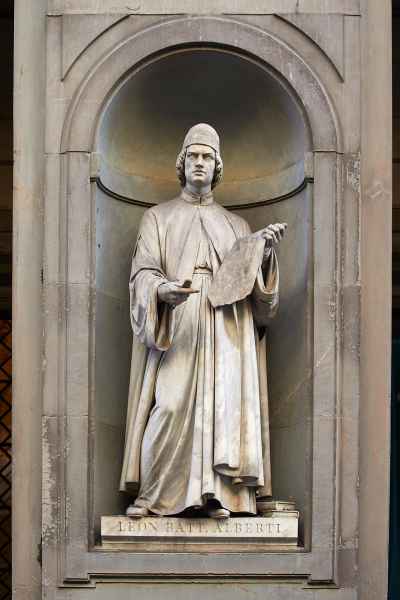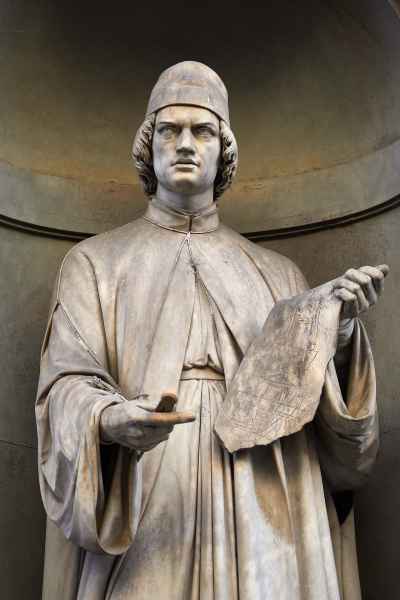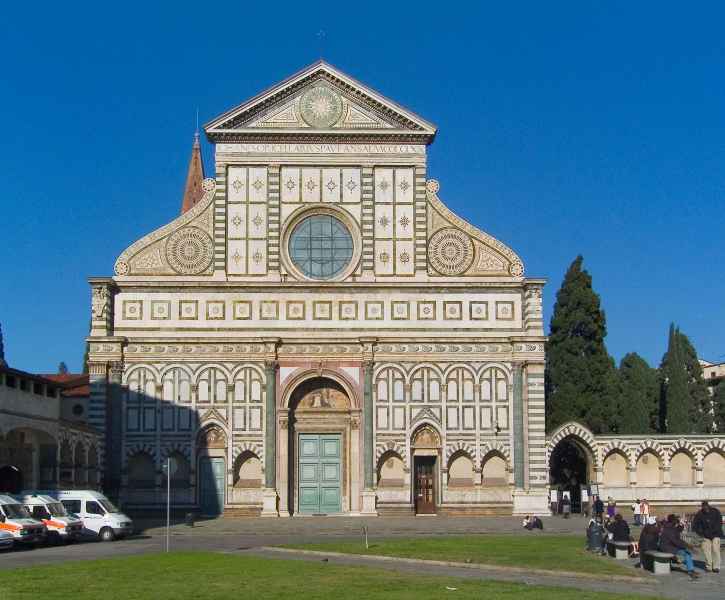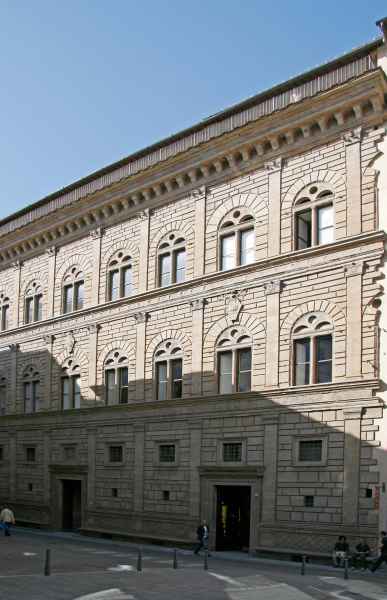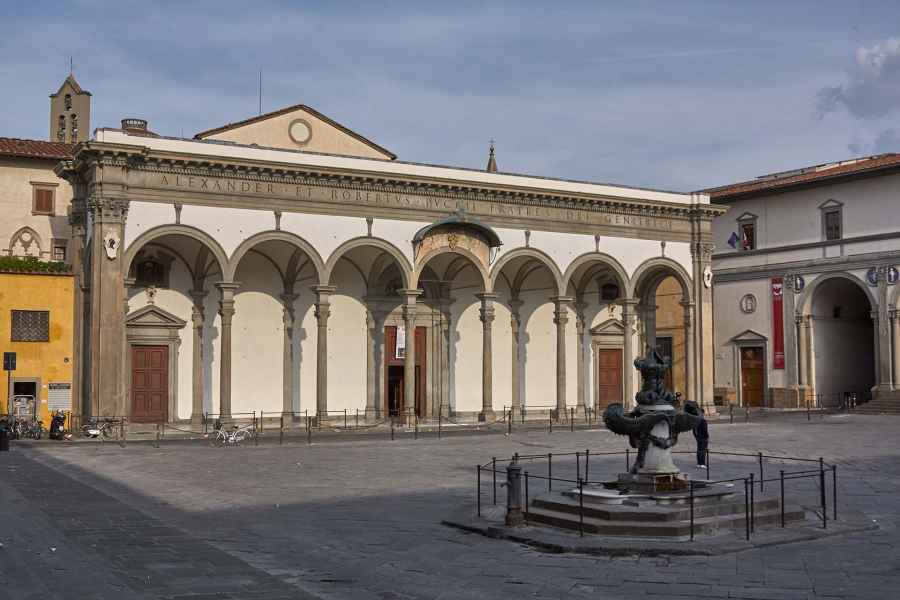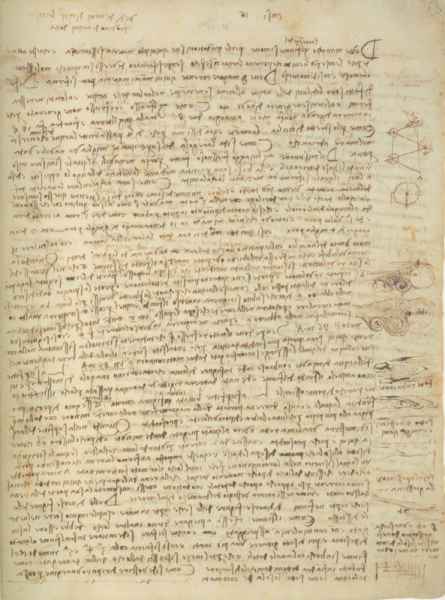Great architect and theoretician of art, the natural son of a Florentine exiled to Genoa, Alberti exerted a significant influence on Leonardo's scientific and technological knowledge. Leonardo could find a reflection of Albert's ideas on perspective and structure in the numerous buildings erected by the famous architect in Florence: the Loggia and Palazzo Rucellai in Via della Vigna Nuova, begun in 1447, the façade of Santa Maria Novella from 1456, the tempietto of the Holy Sepulchre in San Pancrazio (1467), and the dome of the Santissima Annunziata (1470). Well known to Leonardo, as to other Renaissance men of learning, were Alberti's theoretical works, such as his De Statua [Concerning statues], De pictura [Concerning painting] and De re aedificatoria [Concerning buildings]. These writings are, in fact, recurrently mentioned in Leonardo's notes (Codex Atlanticus, Codex Arundel, Madrid Ms. II and Codex Leicester), in which he re-elaborates and discusses theories and technical solutions proposed by Alberti.

Alberti, Leon Battista (1404 c.- 1472)
Texts by
Alessandro Vezzosi, in collaboration with Agnese Sabato / English translation by Catherine Frost
Related resources
External links
Gallery
Related resources
External links
Gallery





